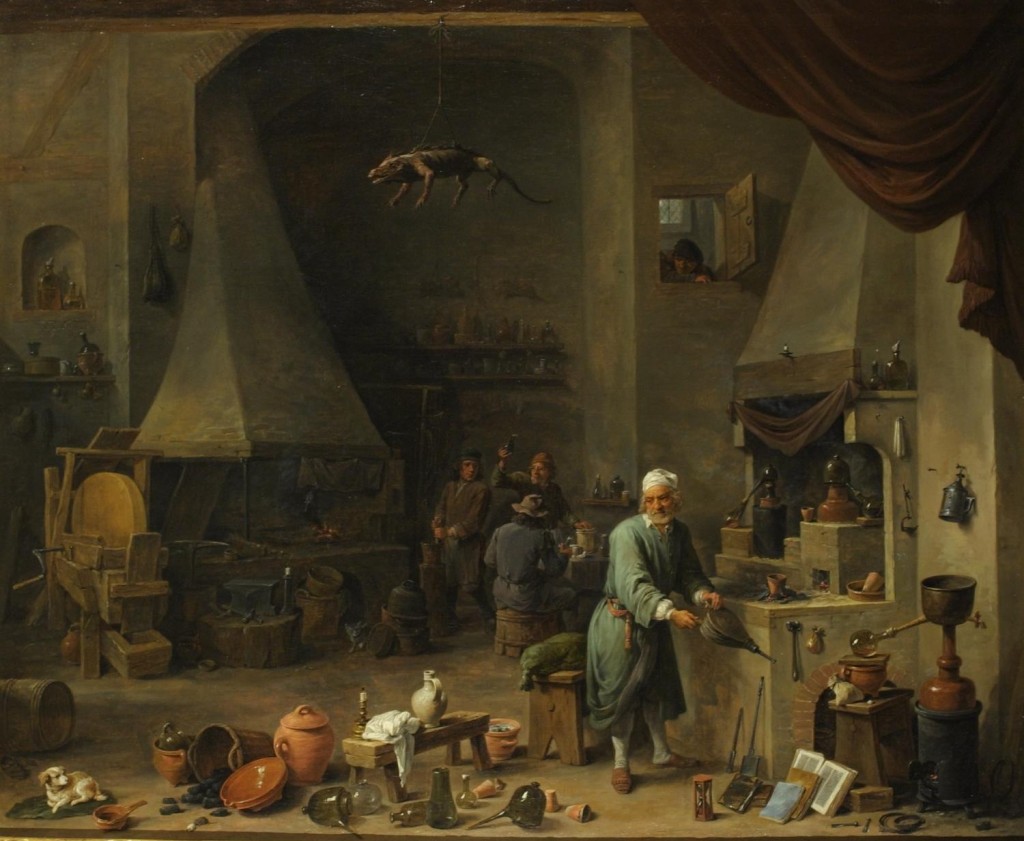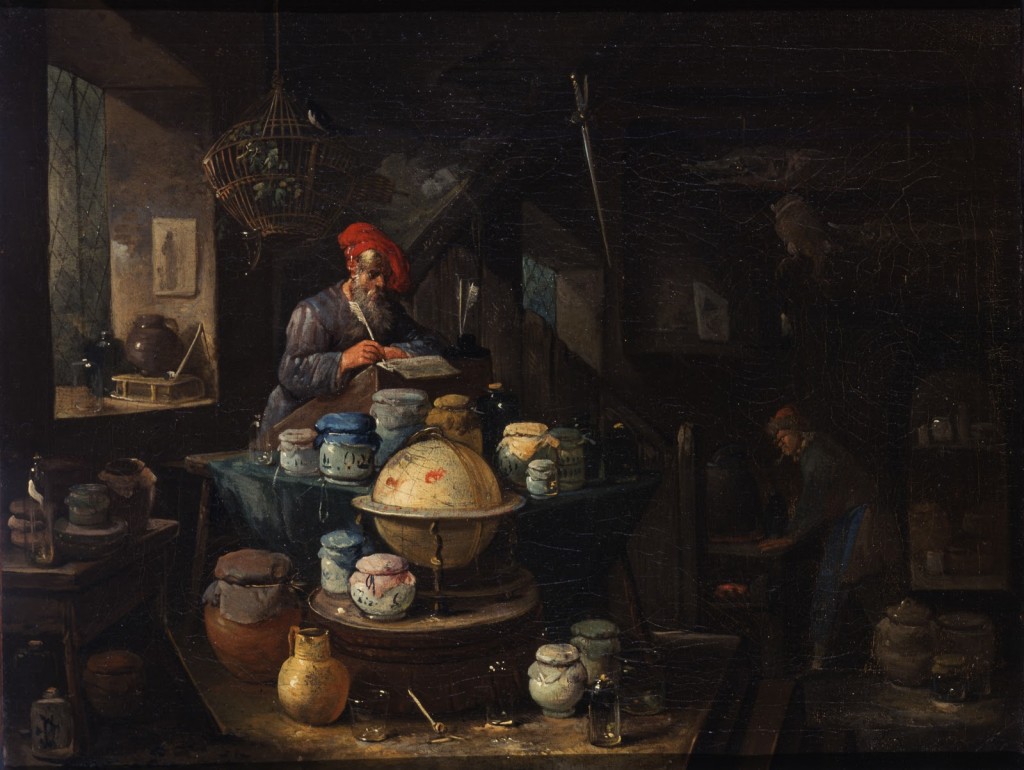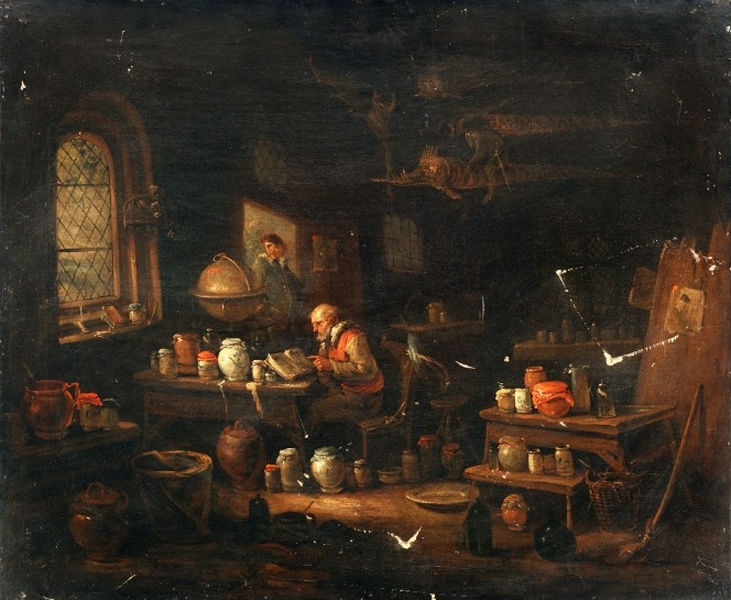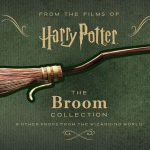“Harry Potter: A History of Magic” and Plant Lore, Part 5: Apothecaries, Alchemists and the Hogwarts Houses
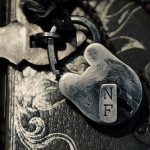
Oct 20, 2018
Exclusives, J.K. Rowling, News
What’s every Potter fan’s dream (other than attending Hogwarts)? Access to J.K. Rowling’s notes, of course! The History of Magic exhibition, currently at the New York Historical Society, gives Potter fans exactly that, showing original Potter manuscripts and hand drawn illustrations from the archives of the mastermind, and unpacks her use of real-world historic material and literature in exhibit sections based on Hogwarts classes.
In this final essay, Dr Beatrice Groves – publisher of Literary Allusion In Harry Potter and Potter-expert, who previously analysed the exhibition when it appeared in London, takes us on one last journey through the exhibition through the lens of plant lore, looking into how J.K. Rowling’s world of plants, potions and magical lore was inspired by muggle herbologists. After exploring Rowling’s use of Culpeper’s Complete Herbal, the Doctrine of Signatures, and the Language of Flowers, Groves is taking a look at the world of alchemy and apothecaries, which is pretty timely, given Nicolas Flamel’s big debut in Crimes of Grindelwald — we even saw an apothecary in the French version of Diagon Alley during our set visit! Keep reading for more on this, and the connections between Culpepper’s writings on alchemy, astrology and the ‘inner cosmos’, and Rowling’s creation of the four Hogwarts Houses…
Part 1: J.K. Rowling and Culpeper’s Complete Herbal | Part 2: Bubotuber Pus and the Doctrine of Signatures | Part 3: Plants and J.K. Rowling’s Cratylic naming | Part 4: ‘We can talk, if there is anyone worth talking to:’ The Language of Flowers | Part 5: Apothecaries, Alchemists and the Hogwarts houses
Part 5: Apothecaries, Alchemists and the Hogwarts houses
Chemists or alchemists?
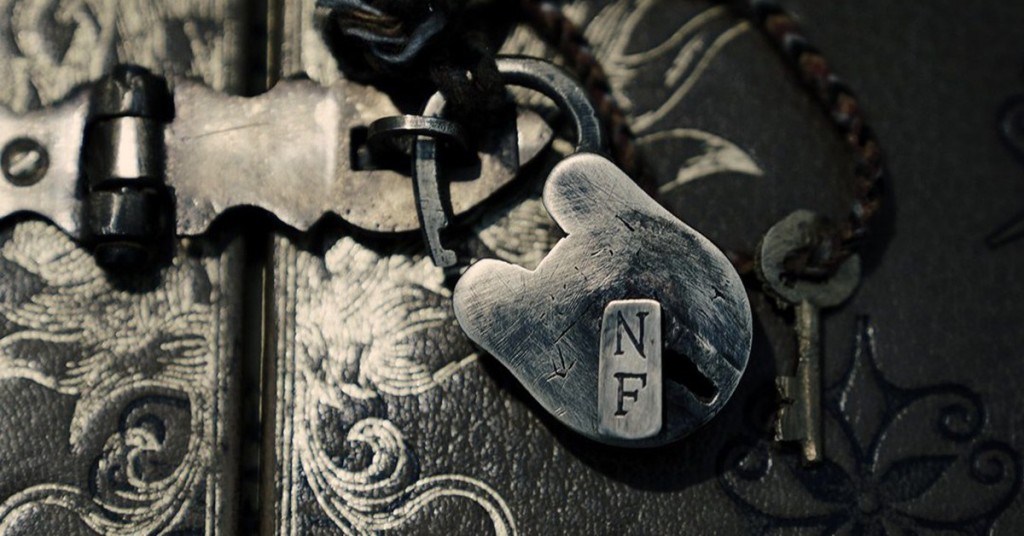
In Shakespeare’s Romeo and Juliet the hero buys the final potion of the play – a poison from an apothecary:
I do remember an apothecary,
And hereabouts he dwells, which late I noted,
In tattered weeds, with overwhelming brows,
Culling of simples. Meagre were his looks,
Sharp misery had worn him to the bones:
And in his needy shop a tortoise hung,
An alligator stuffed, and other skins
Of ill-shaped fishes; and about his shelves
A beggarly account of empty boxes,
Green earthen pots, bladders, and musty seeds,
Remnants of packthread, and old cakes of roses,
Were thinly scattered, to make up a show. (5.1.37-48)
This is probably the most famous description of an apothecary shop and when Harry buys his first set of potion ingredients from the apothecaries in Diagon Alley, there is a similar set-piece description of the evocative and exotic items in this shop:
“Then they visited the Apothecary, which was fascinating enough to make up for its horrible smell, a mixture of bad eggs and rotted cabbages. Barrels of slimy stuff stood on the floor, jars of herbs, dried roots and bright powders lines the walls, bundles of feathers, strings of fangs and snarled claws hung from the ceiling.”
(Philosopher’s Stone, Chap 5)
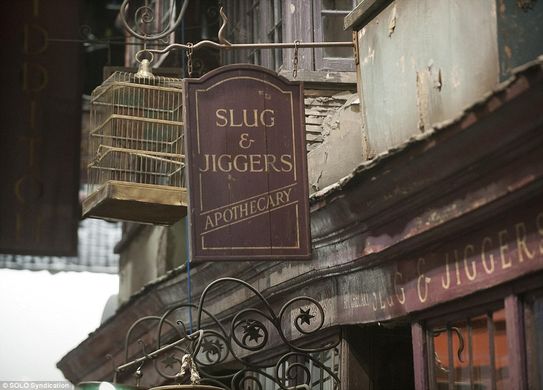
Both Shakespeare’s and Rowling’s apothecaries are stuffed full of unidentified pots of things, and dried out bits of both plants and animals to use to make potions. Both give the impression – with stacked shelves and things hung from the ceiling – of containing a cornucopia of ingredients: anything the buyer could possibly desire. In Harry Potter the apothecary’s shelves are bursting with exciting and colourful possibilities; with its silver unicorn horns and vats of ‘miniscule, glittery black beetle eyes’ is part of the lush excitement as Harry first steps into a Wizarding World of infinite possibilities. In Romeo and Juliet, however, the apothecary is in dire straits. His shop carries the pathos of a desperate show that fools no-one: empty boxes are placed on the shelves to make them appear full, while old seed pods and dried-up rose petals are ‘thinly scattered, to make up a show.’ The hero in Harry Potter is just beginning his adventures, while Romeo is about to kill himself, and these shops echo back to the hero the opening out of exciting new horizons for Harry and the shuttered closing down of Romeo’s hopelessness. (To underline the point in Romeo and Juliet, the shop is also shut.)
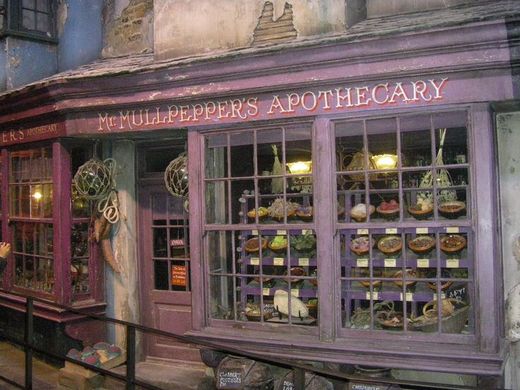
But the difference between the fortunes of the two apothecary shops might also be a sign about the differing status of magic in the Wizarding and the early modern Muggle world. (In modern Muggle terms an apothecary is a ‘chemist’s’ – a term so habitual we tend to forget it is derived from ‘alchemist.’)
The closest parallel between Rowling and Shakespeare’s apothecary shops is that both have dead animals hanging from the ceiling. In Shakespeare this is named as an alligator, and it might likewise be so in Diagon Alley: ‘strings of fangs and snarled claws hung from the ceiling.’ Lyndy Abrahams has read this alligator as evidence that Shakespeare’s apothecary is also an alchemist:
“[Romeo] obtains his poison from a poverty-stricken apothecary whose shop is adorned with alchemical insignia… one of the distinguishing features of the alchemist’s laboratory and the shop of an apothecary with alchemical knowledge, was the stuffed fish or alligator suspended from the ceiling.”
Numerous seventeenth century images of alchemist’s laboratory show these alligators:
To my delight, Lyndy Abrahams also name-checks a work by our friend Nicholas Flamel as evidence for this connection.
I think there is a further hint that the apothecary shop in Philosopher’s Stone, like Shakespeare’s, may combine the activities of alchemist and apothecary. the modern ‘chemist’s shop, which apothecaryies fulfil in the Wizarding World. I wonder, for example, about the stress laid on the sulphurous smell. Rowling mentions that the apothecary’s smells of ‘bad eggs and rotted cabbages:’ which is precisely how a modern chemist would describe the smell of sulphur: ‘reminiscent of rotting cabbage or spoiled eggs.’ There is no particular reason for an apothecary to smell of sulphur, but every reason that an alchemist’s would.

Alchemists believed that gold could be formed from the perfect union of mercury and sulphur (the Alchemical Wedding) and so much of their practical experimentation would have involved sulphurous fumes. John Granger (who knows more about literary alchemy in Harry Potter than anyone) has written about the alchemical importance of sulphur in the novels, and the way in which the Alchemical Wedding is echoed throughout by the unions of red-headed Weasleys with mercurial women. Sulphur would have been one of the most pungent smells in an alchemical workshop and I think it is telling that the apothecary’s on Diagon Alley stinks of the stuff.
“Nicholas Flamel, of course, is returning to the Wizarding franchise in the forthcoming Crimes of Grindelwald. As early 1998 Rowling noted the ways in which alchemical ideas underpinned her world:
“I’ve never wanted to be a witch, but an alchemist, now that’s a different matter. To invent this wizard world, I’ve learned a ridiculous amount about alchemy. Perhaps much of it I’ll never use in the books, but I have to know in detail what magic can and cannot do in order to set the parameters and establish the stories’ internal logic.””
Culpeper was not an alchemist per se, but his interest in the ‘natural magic’ of planetary influence on herbs in his 1652 Complete Herbal (or, as he calls it, his ‘Astrologo-Physical Discourse’) is part of the perceived link between apothecaries (or chemists) and alchemists.
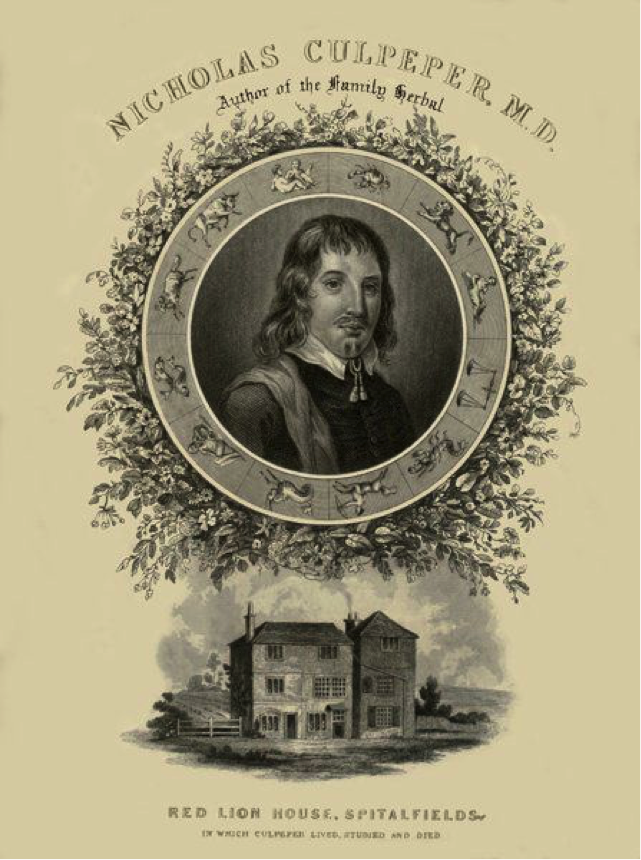
Medieval treatises on plants which linked them to the action of planets, as Culpeper does, believe that the ‘powers of plants – curative, alchemical, and magical – were linked to the powers of the celestial body with which each was identified’. Rowling delights in way that Culpeper links plants into this wider, magical, schema: ‘it’s not even the properties of the plants, it’s just the way they wrote about the plants and observed them and tied them planetary movements and so on. There’s such a poetry to it. Ah yes, “it is fat, unctuous and temperate, generated of that which is moist, aerious and moderately hot”.’ This linking of plants, planets and the body’s humours (hot, cold, dry and moist) is a fundamentally hermetic or alchemical view of the universe, in which the whole of creation is tightly connected, but also separated into ‘teams’ of air, water, earth or fire (or, in bodily terms, dry, moist, cold and dry – or, in Potter terms, Ravenclaw, Slytherin, Hufflepuff or Gryffindor).
‘Gryffindor is fire, Ravenclaw is air, Hufflepuff is earth, and Slytherin is water’
Culpeper’s idea that the planets governed plants in a way that communicated how those plants could cure the body expresses a hermetic belief in the connectedness of all creation. For herbalists, such as Culpeper, every plant (as Rowling notes) was linked to a planet as were the humours of each person – all aspects of creation were intimately linked. The microcosm of plants and the macrocosm of the planets both find their ultimate meaning in the human body. Culpeper wrote that:
“If you do but consider the whole universe as one united body and man an epitome of this body, it will seem strange to none but madmen and fools that the stars should have influence upon the body of man, considering he, be[ing] an epitome of Creation, must needs have a celestial world within himself.”
Culpeper attempted to synthesise the more mystical beliefs of Paracelsus with Galen’s understanding of the humours, which underlay all medical understanding of the period:
“The Galenic principle goes back to Aristotle’s system of the four elements: Fire, Water, Earth and Air. On this Galen based the hypothesis which ascribes to the properties of herbs and medicines the four qualities or natures: ‘Hot, cold, dryness and moisture.’ Health was defined as a maintenance of the right proportions of these qualities in the body and disease an imbalance, e.g. having too much heat. The therapeutic principle aimed at restoring the proper balance… In the astrological system a similar imbalance was supposed to exist between the virtue of the stars with opposing pairs such as Mars and Venus, Moon and Sun.”
Culpeper’s astrological system tried to map the astrological system on to the traditional medical understanding of the body as a microcosm of the cosmic division into fire, water, earth and air.
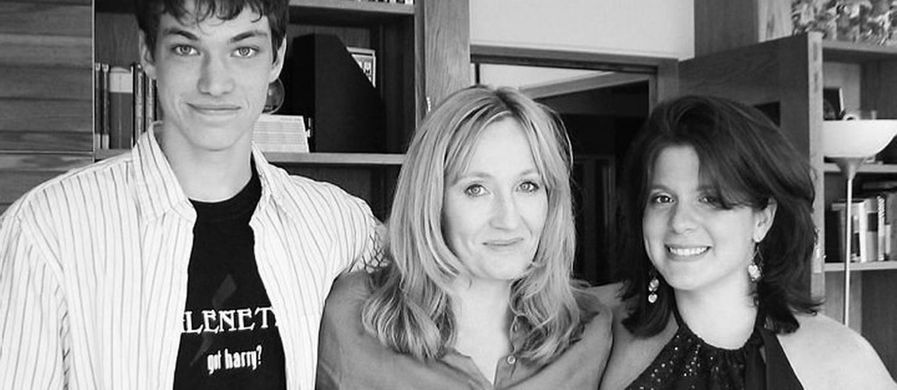
Hogwarts likewise partakes of this division, as Rowling explained in her interview with Leaky in 2005. Rowling, interestingly, links the presence of Slytherin to the different aspects of each person (what Galen would have thought of as the balance between hot, cold, dryness and moisture in each nature (or the humours of yellow bile, black bile, blood and phlegm)) as well as with the four elements:
“…the deeper answer, the non-flippant answer, would be that you have to embrace all a person, you have to take them with their flaws, and everyone’s got them… I wanted them to correspond roughly to the four elements. So Gryffindor is fire, Ravenclaw is air, Hufflepuff is earth, and Slytherin is water, hence the fact that their common room is under the lake. So again, it was this idea of harmony and balance, that you had four necessary components and by integrating them you would make a very strong place.”
The four founder of Hogwarts all have alliterative names – Godric Gryffindor, Helga Hufflepuff, Rowena Ravenclaw and Salazar Slytherin – which work perfectly for their status as founders. Foundations should be strong and alliterative names have strength. But it is also another aspect of the balance of Hogwarts – each of these names is equally solid.
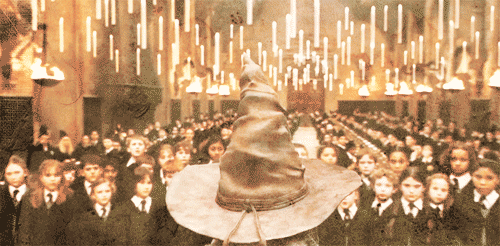
Culpeper believed that the humours of the body echoed the composition of the cosmos and that the way to keep the body healthy was to have all these parts in balance. The four Hogwarts’ houses echo this balance but I think it also goes one step deeper, and that this balance can be found within the central Gryffindors as well as around them. The four main Gryffindors – Harry, Hermione, Ron and Neville – continue this balance on within Gryffindor itself. Harry can be sub-sorted into Slytherin, Hermione into Ravenclaw and Neville into Hufflepuff – leaving only Ron as a dyed-in-the-blood Gryffindor. This is often thought of as a plot-weakness of the books but it is not one that they shy away from. The question of why Harry isn’t in Slytherin is central to Chamber; Neville in the face of Malfoy’s jibes constantly – and finally, triumphantly, – has to prove himself worthy of being in Gryffindor and an incredulous Terry Boot finally explicitly asks what the cleverest witch of her age is doing in a house other than Ravenclaw. Another way of seeing this anomaly is that, just as natural magic and herbalism had always seen the microcosm as an echo of the macrocosm, and Galenic medical principles had established the importance of balance in both, so to maintain ‘this idea of harmony and balance, that you had four necessary components and by integrating them you would make a very strong place’ so the balance between the houses should be found within the microcosm (each Gryffindor year) as well as the macrocosm of Hogwarts itself.
We’d like to thank Dr Beatrice Groves for these wonderful essays, written exclusively for Leaky to help celebrate the launch of the History of Magic exhibition in New York! Take a look at her previous analysis of the exhibition in London for more exciting insights, follow her on Twitter, and be sure to check out her book, Literary Allusion In Harry Potter, for more of unravelling of Rowling’s inspiration.
Take a look at our review of the exhibition to find out more details about the New York additions. Book your tickets to the exhibition at the New York Historical Society website, read more about the documentary (which is now available on DVD), the official book of the exhibition, and download the new audiobook!
References:
[1] Abraham, Lyndy. “”The Lovers in the Tomb”: Alchemical Emblems in Shakespeare, Donne and Marvell.” Emblematica 5, no. 2 (1991): 307-8.
[2] Nicholas Flammel, His Exposition of the Hieroglyphciall Figures which he caused to be painted upon an Arch in St. Innocents Church-yard in Paris (London: Thomas Walkley, 1624)
[3] https://phys.org/news/2016-10-sulfur-rotten.html
[4] See: John Granger Deathly Hallows Lectures, Chap 2;
Unlocking Harry Potter, chap 2.
[5] http://www.accio-quote.org/articles/1998/1298-herald-simpson.html
[6] Linda Ehrsam Voigts, ‘Plants and Planets: Linking the Vegetable with the Celestial in Late Medieval Texts,’ in Health and Healing from the Medieval Garden, eds. Peter Dendle and Alain Touwaide (Woodbridge, 2008), p.33.
[7] https://www.amazon.co.uk/Harry-Potter-History-Magic-DVD/dp/B076M9WW3X/ref=sr_1_1?ie=UTF8&qid=1508937024&sr=8-1&keywords=harry+potter+history+of+magic+dvd
[8] Pharmacopoeia Londinensis, 1654, A3v–A4 quoted in DNB
[9] Olav Thulesius, Nicholas Culpeper: English Physician and Astrologer (London: Macmillan, 1995), 106-107.
[10] http://www.accio-quote.org/articles/2005/0705-tlc_mugglenet-anelli-3.htm
